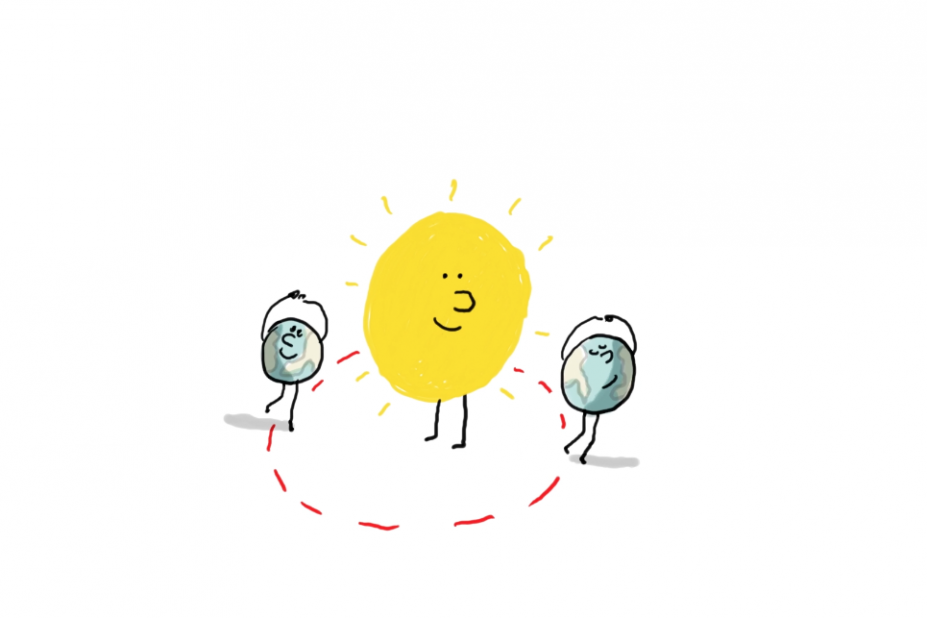The longest day of the year is around 21 June. There are about 16 hours between sunrise and sunset.
During the shortest day, around 21 December, the sun shines less than 9 hours!
These 2 extremes are called the summer solstice and the winter solstice. Between the 2, the days get shorter.
They get longer little by little until the following summer solstice, and so on.
But that’s true for countries in the northern hemisphere, like France, the USA or Japan.
On the equator, the days and nights are the same length all year long.
And at the poles, it’s dark 6 months in winter and light 6 months in summer!
To understand, imagine the Earth facing the sun. As you know, it spins around on itself every 24 hours. That’s what makes night and day.





 Retour
Retour